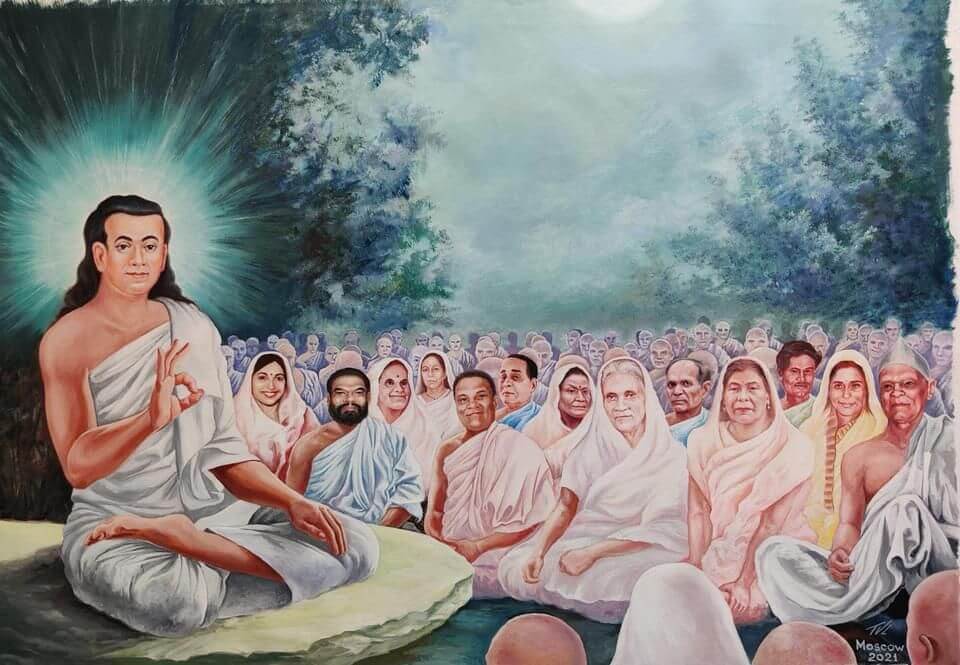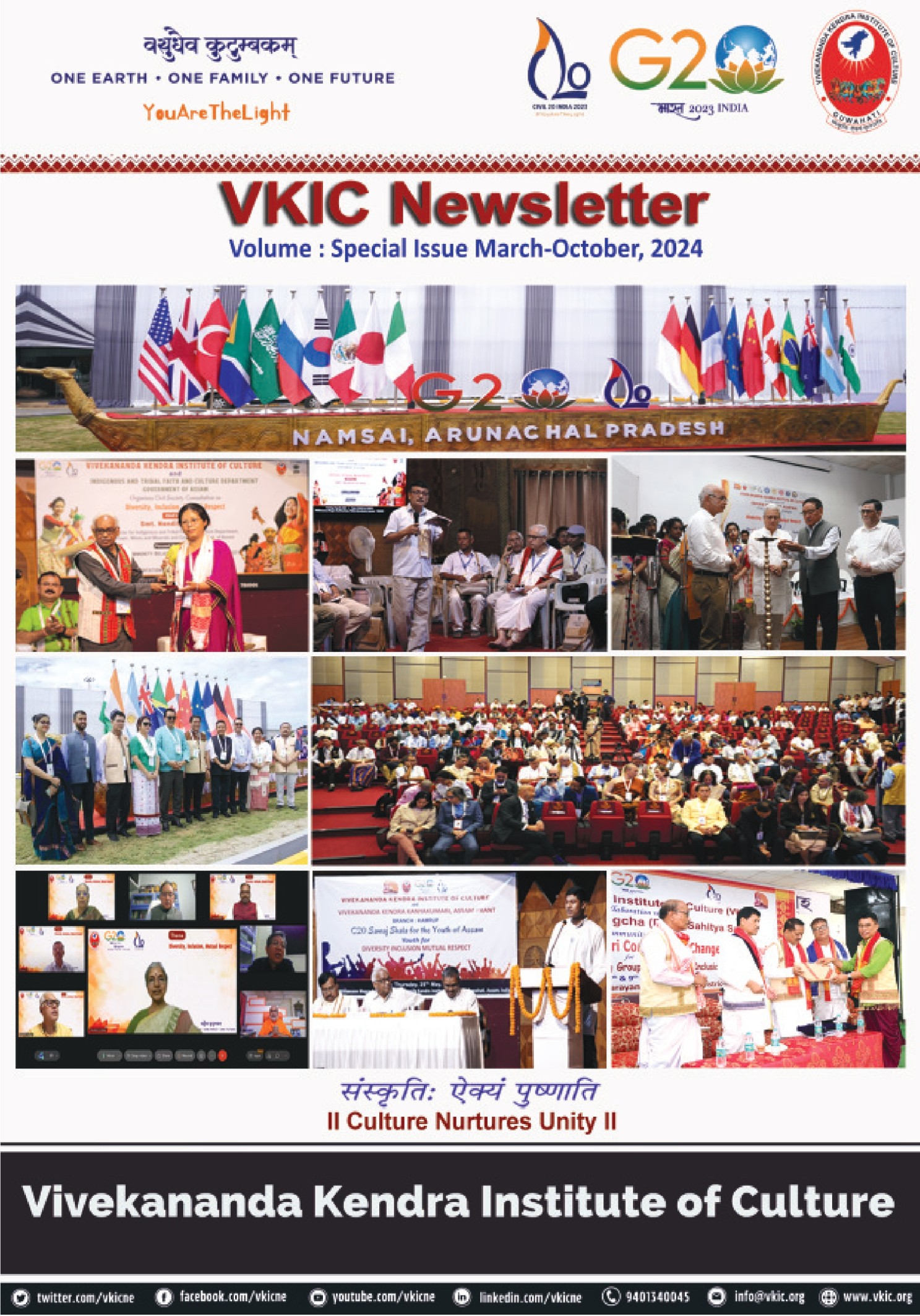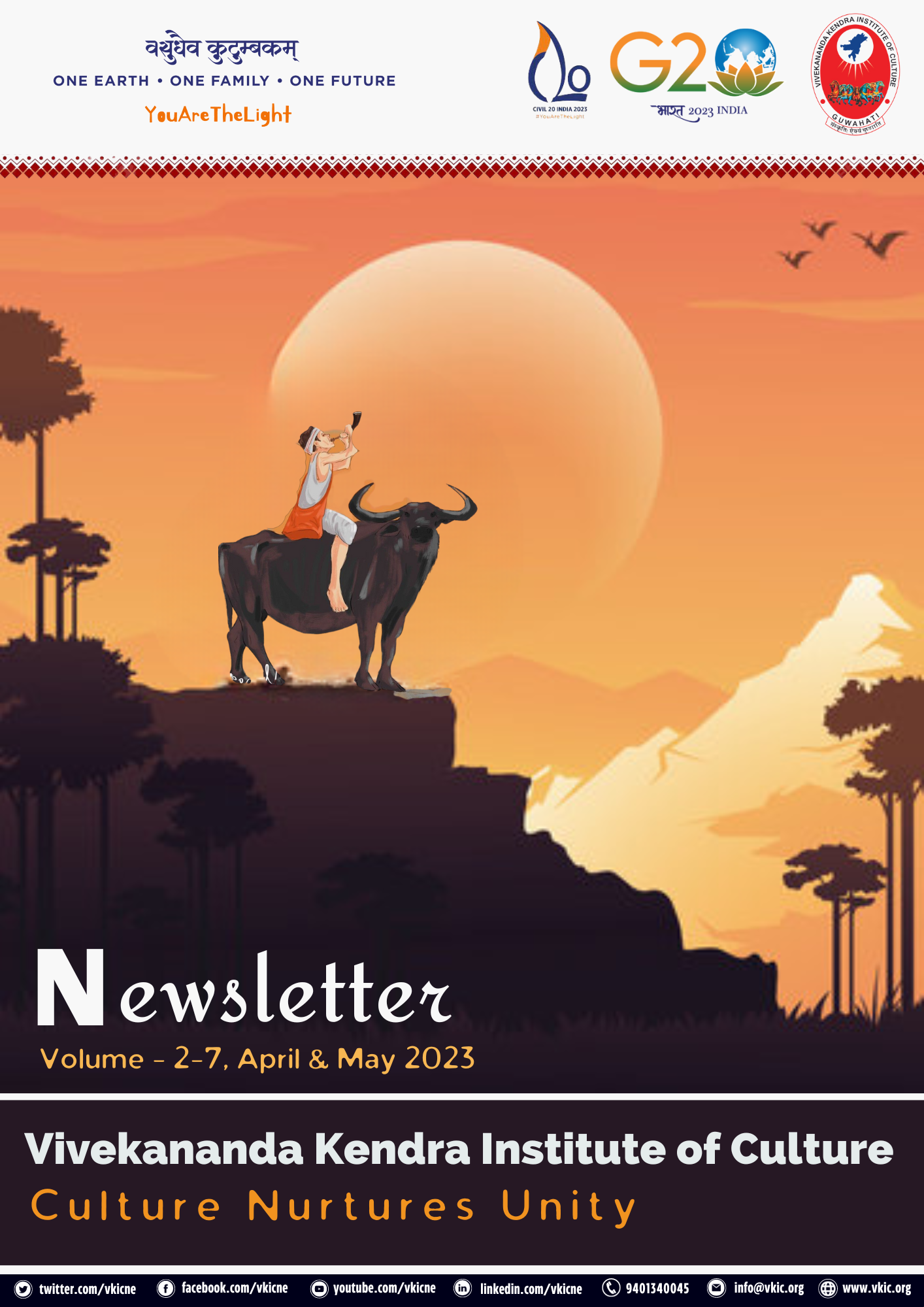
Human beings have been engaged in a magical activity called communication from the very moment they arrived on this planet. As the human race flourished and multiplied, this concept of communication too began expanding, resulting in what we today know as mass communication. This activity called mass communication is (i) continuous, (ii) personal, (iii) circular in motion, and, most importantly (iv) irreversible.
I am not aware of whether they carried out any research on mass communication during the time when Srimanta Sankaradeva existed on this part of the earth. But it is an undeniable fact that it was this great saint of medieval Assam who not only carried out numerous experiments with various tools of mass communication, but also put them into the best possible use with the ultimate goal of making human life meaningful and successful. Srimanta Sankaradeva was not just a saint; he was a social reformer, a literary genius, a great performing artiste, a thinker and a philosopher par excellence, owner of a rare versatile personality that elevated him from the ordinary human form to that of a super-being. No doubt we revere him as the Mahapurusha.
Dr Maheswar Neog, an eminent scholar, in his book 'Sankaradeva' has described in the most lucid manner the period when the Mahapurusha arrived, an era when Assam or ancient Kamarupa "or by whatever name this north-eastern part of India was known then" was politically and socially in the melting pot. "The country was disunited through various jarring religious sects, heterogeneous faiths and practices... Men were heathens, and worshipped clouds and rivers, barns or hay-tofts. Animistic beliefs and usages were rife not only among the tribesmen but also among the uneducated general populace. Spells and incantations found a good market. An atmosphere of mystery shrouded the whole country inasmuch as Kamarupa became known to the outside world as a land of black art and necromancy, by which one could take and give others any form one liked."
It is true that Sankaradeva, a widely travelled person, could not abolish or do away with the caste divisions that were prevalent during that period. But he did minimize the impact of such practices, so much so that prayer services and other religious rituals have come to be conducted not necessarily by persons who have traditionally been priests, but by any other member of the society. This itself brought about a significant transformation in a pluralistic society that Assam always has been, an impact that is strongly visible even in the present century.
Srimanta Sankaradeva used various forms and tools of mass communication in the most effective manner while bringing about the much-needed changes in the society. It was music - music of bhakti, music flowing from the core of one heart into the divine and vice versa - that he used as the eternal fountain of this magical application of mass communication, while the naam-ghar, the village prayer hall turned out to be what we may today term as the village or community growth centre if not the community information centre altogether!
The naam-ghar became the hub of all village activity, often tuming into a village court where petty disputes and quarrels were settled without any prolonged argument; a betel nut and a betel leaf often becoming the only form of penalty that the community would impose, a practice that is still in vogue in most parts of rural Assam. It is also the village parliament; it was in the naam-ghar that villagers learn the basic principles of democracy, with modern-day scholars also calling it the village parliament. The naam-ghar is also the village theatre, the common man's centre for performing arts, while the 'sattra' a typical Vaishnavite monastery-emerging as not just a place where young monks were brought up and older monks practiced religion, but more as an academy of fine arts as well as performing arts. So overwhelming was the impact of the sattra institution that the spiritual obligation not only made the people god-fearing, moral beings but also taught them to treat others as equals. Tolerance on the other hand became a rule rather than an exception in Assamese society. Even today, every Assamese village is bound together by a naam-ghar and a large number of disputes do not reach the government judiciary because the people continue to have deep faith and veneration to the unique institution introduced by Sankaradeva more than 500 years ago.
Srimanta Sankaradeva was one who strongly believed that mass communication was the prime moving force behind human civilization. It was he who also strongly believed that various forms of mass communication were nothing but the ultimate outcome of man's creative nature; that it was mass communication that alone could synergise various efforts of human beings into a powerful force that would help the human race keep marching ahead in the right direction; and that it was mass communication that would provide the much-needed upward mobility that a society required to remain healthy and vivrent.
To quote again from Dr Neog: "Sankaradeva effected a great change and cleansing of hearts. He also taught people personal cleanliness and correct social behaviour... When a person was received into the faith, he had to give up old unclean ways like taking intoxicants, the keeping of unclean animals and birds, and cultivation of poppy for opium..."
It was during Sankaradeva's time and definitely because of the great bhakti movement that he pioneered, that Assamese literature underwent a great renaissance. Sankaradeva along with his principal disciple and successor Madhavadeva composed a number of lyrics (bar-geet), plays (ankiya-bhawona), verse narratives and other types of literary works, which apart from helping propagate the teachings of the new faith, also enriched Assamese literature to a great extent. A large number of poets, writers and scholars - Ananta Kandali, Rama Saraswati, Shridhara Kandali, Vaikunthanath Kaviratna, Gopaladeva, Ramacharana Thakur, Daityari Thakur, Gopalacharana Dwija - flourished under the banner of bhakti and led a vigorous literary movement that had a tremendous impact on the people.
Sankaradeva himself wrote six plays which are still in existence and are being regularly performed in the satras all over Assam including those that are located in Majuli. These six plays (ankiya-bhawonas) are also performed by people across Assam during festivals that include the birth and death anniversaries of Sankaradeva, Madhavadeva and the other saints. Bhawonas are also performed in religious ceremonies in individual households in different parts of Assam. The six plays that Sankaradeva has left behind are Patni-prasada, Kali-damana, Keli-gopala, Rukmini-harana, Parijata-haran and Ramavijaya.
One of the biggest contributions of the neo-Vaishnavite movement of Sankaradeva is music. Two distinct musical geets that this movement gave birth to are bar-geet and ankiya-geet-the latter being used as songs in the several plays that the two Mahapurushas wrote. Sankaradeva is said to have composed as many as 240 bar-geets for the purpose of prayer services. But the only manuscript copy of these unique bar-geets was destroyed in an accidental fire that broke out in the residence of Kamala Gayan, one of his well-known musician-disciples. This caused immense distress and mental agony to Sankaradeva, who was by then already well past 100 years of age, and he immediately directed his worthy disciple Madhavadeva to retrieve the hymns by all possible means. Madhavadeva on his part wrote down as many bar-geets as existed in the memory of the bhakats (disciples) who used to regularly sing them, and could finally gather only 191.
Sankaradeva and Madhavadeva used the bar-geets as a tool of mass communication for religious propaganda. Written in a language which is understood even by the illiterate, and having no intricate Sanskrit vocabulary in them, the bar-geets also have simple classical tunes which any lay person can pick up and master. The expansion of the sattra and naam-ghar network on the other hand took the bar-geets to every nook and corner of the Assam - and made them accessible to the lowest of the low in society. Such was the impact of the bar-geets - which soon became property of the common folk - that a large number of imitation bar-geets came to be composed by several other preachers in the immediate post-Sankaradeva and post-Madhavadeva era.
Sankaradeva knew it well for what purpose various forms of mass communication should be used. Thus, his every mass communication endeavour was people-oriented, intended at the masses. The most significant aspect of his mass communication efforts is that all of them were for the benefit of the masses, the people, not for the benefit or entertainment of a king's court. Sankaradeva also knew it well that, "being at the heart of all social action and interaction, mass communication functions as a relating tool that creates understanding, facilitates work, and strengthens collective living among people." It is interesting to note that this particular quote is from a modern day scholar of mass communication of the West; but it applies so suitably to Srimanta Sankaradeva that one is tempted to imagine, for a while, that either the modern day theorist carried out a study of the mass communication efforts of the Mahapurusha, or the Mahapurusha himself had promulgated this particular thought that the modern-day theorist later referred to!
Srimanta Sankaradeva's mass communication activity was so massive and overwhelming that it converted almost every member of the community into an active participant of the process. He considered every individual member of the community as an active communicator who had immense potential and energy that could be translated into good work for the benefit of one and all. He realized the creative potential of every individual, and thus engaged every member of the community in developing his or her skills so that those were put to the best possible use for common good. A bhawona performance in a village, even today, makes every member of the community busy; if one section is playing different roles, one section is engaged in the production activity. Just look at the sattras; one would not find any bhakat or sattra inmate sitting idle for any moment of the day. No doubt, the age in which Srimanta Sankaradeva flourished, it is said that it was an age of one ideal, that of bhakti; of one god, of one leadership, that of Sankaradeva.
Article was written by Samudra Gupta Kashyap
He is a leading journalist, having re-ported the Northeastern region of India for nearly three decades for various newspapers. Based in Guwahati, currently he is Special Correspondent of the Indian Express, looking after the region. A professional development communicator, he has co-authored three books and has scripted a 26-episode television serial for Bhupen Hazarika on the Brahmaputra.


